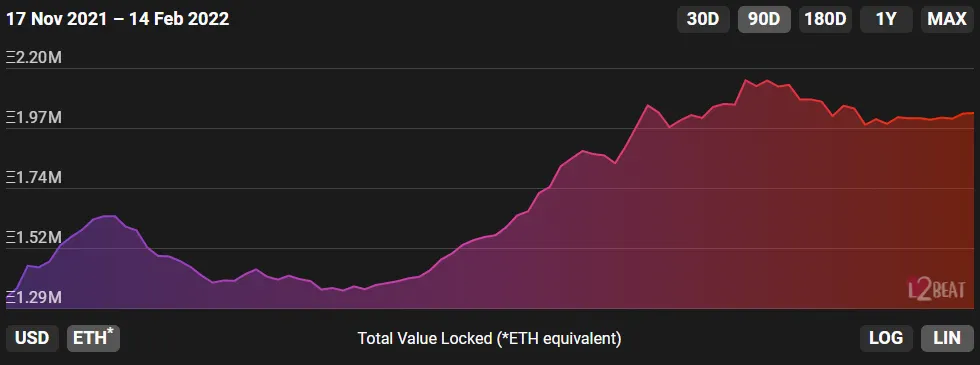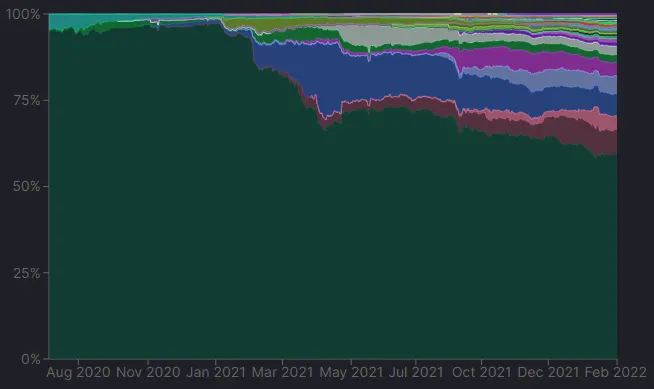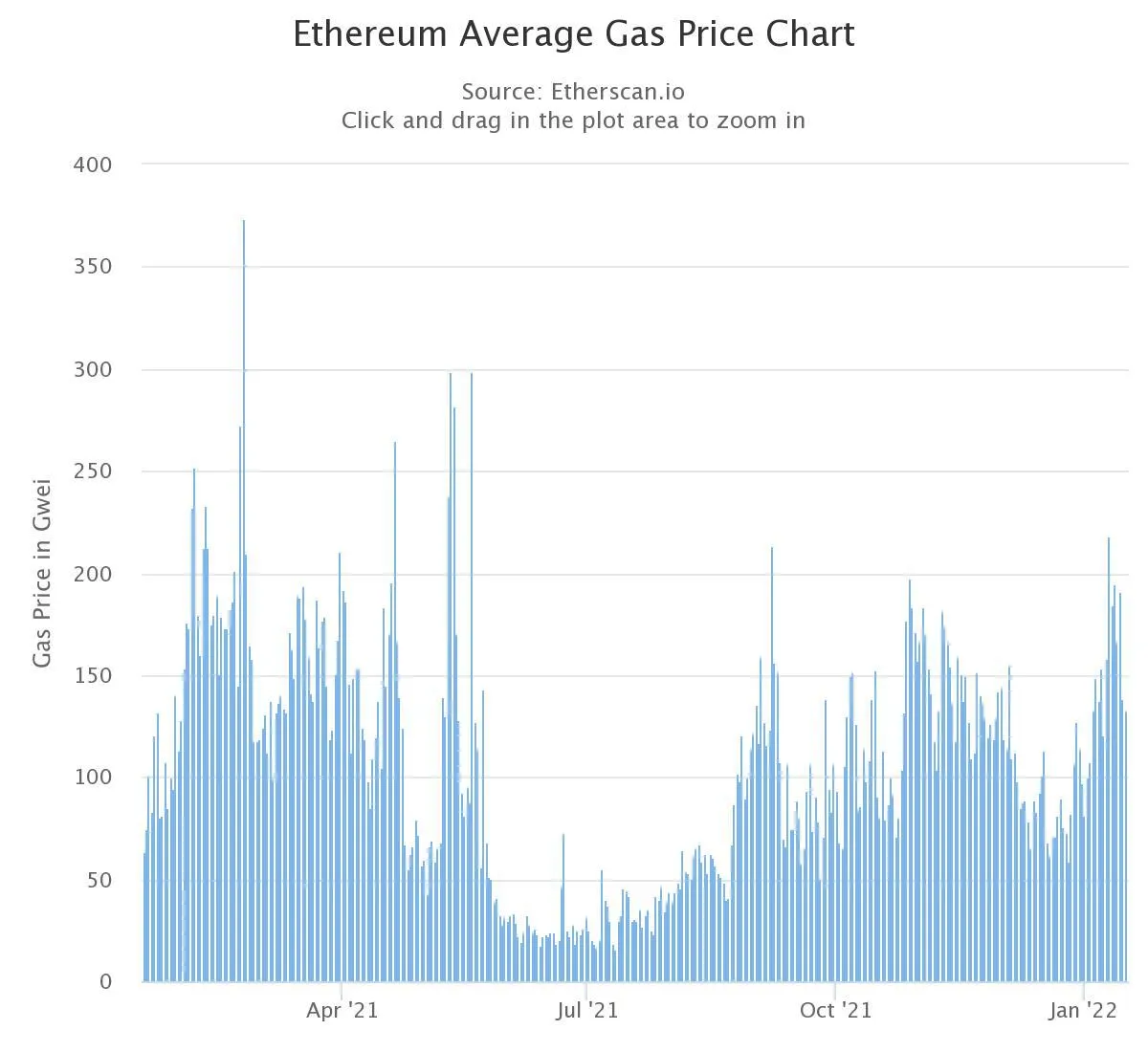
Why are gas fees on Ethereum dropping?
It was, after all, not too long ago that it cost an arm and a leg just to approve a transaction on the network, let alone start swinging your digital scythe in a yield farm. Now, we’re seeing sub-$10 moves (or at least close to it).
Gas, by the way, is crypto speak for the cost of doing business on Ethereum. Gas fees are essentially transaction fees, and when there’s a lot of activity happening, it can cost more to get your transaction validated by miners in the network.
Gas fees on Ethereum are notoriously high. But since around January 10, they’ve been dropping. When I double-checked the cost of giving token approval on decentralized exchange aggregator 1inch, for instance, I was presented with roughly a $13 charge. That's still pretty high, but those who've been in DeFi longer than six months know it's lower than it was.
So, why the relief? Well, it could be thanks to several trends. Let's test each one as an explanation.
The first trend that we can put to the test is the rise of layer 2 activity. With so much money moving off of Ethereum’s mainnet and onto other networks, like Arbitrum and Optimism, surely this would lower fees.
Unfortunately, when we examine the total value of Ethereum (in ETH, not dollars) locked up in layer 2 solutions, activity has been relatively stagnant. Measuring this in ETH terms rather than dollars also helps us eliminate peaks and troughs that may simply be due to the rise and fall in the price of Ethereum. Instead, we can simply examine how much ETH is moving into these alternative networks, no matter its price in dollars.

The chart above shows that the value of ETH on layer 2 networks peaked at the end of January, waned a touch, and has essentially leveled off.
But when we compare these values to the median cost of gas over this same period, there isn’t really a clear relationship.

We see a similar peak, but the flatline doesn’t quite line up. So, while this theory isn’t a complete dud, we can definitely keep looking for answers.
After layer 2 solutions, perhaps the lower gas costs on Ethereum can be chalked up to users moving to cheaper chains like Terra, Solana, Avalanche, and the rest. Like the layer 2 theory, there might also be some truth in this.
That’s because, at the beginning of 2021, Ethereum was basically the only DeFi game in town, dominating more than 97% of the market share. Just one year later, on January 1 of this year, that figure dropped to 62.35%.
Today, Ethereum accounts for 58% of the entire $123 billion DeFi market, according to DeFi Llama. That’s quite the dip from 97% to 58% in little more than a year.

Still, something’s not quite right about that either. If we look back to when Ethereum was so dominant in January 2021 and compare it to now, gas prices are roughly the same.
On January 17, 2021, the average gas price was 63 gwei (the unit for measuring gas, equivalent to 0.000000001 ETH); on the same day this year, the price was 154 gwei despite activity popping up on other chains.

So, if it's not layer 2 migration or layer 1 wars, then what could it be?
What about the crypto market’s overall cooling? Crypto has, after all, shaved off roughly $1 trillion in market cap since the November highs, and we can make the general assumption that this has led to lower activity overall. While that may make for good Twitter fodder, it’s far from a concrete answer.
The final stone still to overturn is NFTs, most of which get minted and traded on the Ethereum network.
Even as the overall crypto market cap tumbled into the year, the market for NFTs—tokens that are used to demonstrate ownership over other assets—showed no signs of stopping. OpenSea also broke another record for sales in January, hitting $5 billion in sales for the month. Tons of celebrities like Paris Hilton, Eminem, Tom Brady, and tons of others continued to pile into the trend.
Well, as it turns out, that NFT trading train has finally slowed down—if only briefly. And NFT trading costs gas, albeit much less than most DeFi stuff typically. So this might be our answer.
Sure enough, Ethereum volumes on OpenSea have fallen off a cliff the past few days.
Looking a bit further back, the relationship is even more striking. From February 1 to February 6, volumes on OpenSea halved from $247 million to $124 million.

At the same time, the median gas price also dropped roughly 50%, falling from 134 gwei to 65 gwei.

To back-check that those USD values in the first chart aren’t simply because the price of Ethereum dropped, we just need to check the price of ETH from the same time. According to data pulled from CoinGecko, the price of Ethereum actually rose from roughly $2,600 to $3,020, completing a 23% run-up. This further solidifies the fact that there was a clear drop in volume on OpenSea that has very little to do with the price of Ethereum.
What’s more, if we follow this to the present day, the two charts are a near mirror image of one another. There’s a brief spike in volume on OpenSea on February 12, and February 13, before it falls off a cliff—the same with gas prices.
That makes NFTs the most convincing answer. Are those digital apes beginning to lose a little bit of their sheen?
Still, the primary cause of the gas fee dip could be something else unseen. Or the best answer could very well be “all of the above.”
Decrypting DeFi is our DeFi newsletter, led by this essay. Subscribers to our emails get to read the essay first, before it goes on the site. Subscribe here.




